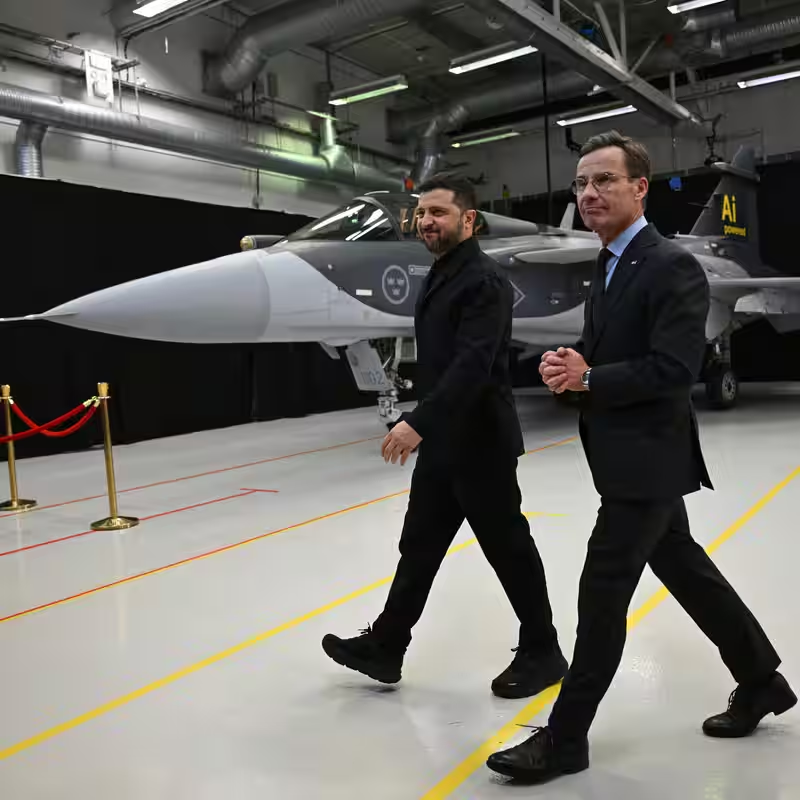Table of Contents
- Ukraine Secures Gripen Deal
- What Is the Gripen Fighter Jet?
- Why Gripen Over F-16?
- Designed for War in the Wild
- Electronic Edge Against Russia
- Timeline and Delivery Outlook
- Sources
Ukraine Secures Gripen Deal
In a major boost to its air defense capabilities, Ukraine has taken a decisive step toward acquiring up to 150 Swedish-made Gripen fighter jets. On Wednesday, Sweden signed a letter of intent to supply the advanced warplanes—a move President Volodymyr Zelensky hailed as “potentially critical” to Kyiv’s ongoing defense against Russia’s invasion.
While deliveries won’t begin for at least three years, defense analysts say the Gripen fighter jet could offer Ukraine tactical advantages that even the much-touted F-16 cannot match in the harsh realities of Eastern European warfare.
What Is the Gripen Fighter Jet?
Developed by Swedish aerospace giant Saab, the Gripen first took to the skies in 1988. It’s a lightweight, multi-role combat aircraft capable of air-to-air combat, ground strikes, and long-range reconnaissance missions. Like the F-16, it’s supersonic and can carry NATO-standard missiles and smart bombs.
But where the Gripen truly stands out is in its operational flexibility—especially in environments with limited infrastructure, damaged runways, or extreme weather.
Why Gripen Over F-16?
While Ukraine has received a small number of F-16s from Western allies, experts argue the Gripen fighter jet is better suited to Ukraine’s unique battlefield needs. “The Gripen family was designed from the outset to operate in austere, off-base locations—it’s in the DNA of the jet,” said Gareth Jennings, an aviation specialist at defense intelligence firm Janes.
Unlike the F-16, which requires extensive ground crews and sophisticated maintenance facilities, the Gripen can be serviced by a small team with minimal training—critical in a warzone where airbases are frequent Russian targets.
Designed for War in the Wild
One of the Gripen’s most underrated features is its ability to operate from highways. Sweden, during the Cold War, built its entire air defense strategy around dispersing jets across rural roads to avoid Soviet strikes. That legacy lives on: the Gripen can take off and land on short, unprepared stretches of pavement—ideal for Ukraine’s vast countryside.
It also refuels and rearms quickly in freezing conditions, a major advantage during winter campaigns when temperatures regularly drop below -20°C.
Electronic Edge Against Russia
Certain Gripen models come equipped with advanced electronic warfare suites specifically optimized to jam or deceive Russian radar and missile systems. According to a 2024 report by the Royal United Services Institute (RUSI), these systems give Ukrainian pilots a fighting chance against Russia’s dense air defense network.
“It’s not just about speed or firepower,” said Dr. Elena Petrova, a defense analyst at RUSI. “It’s about survivability. The Gripen gives Ukraine a smarter, more resilient air platform.”
Timeline and Delivery Outlook
Swedish Prime Minister Ulf Kristersson confirmed that if the deal is finalized, the first Gripens could arrive in Ukraine within three years. That timeline includes pilot training, logistics setup, and potential upgrades to meet Ukrainian operational requirements.
While some critics argue the wait is too long, others see it as a strategic investment in Ukraine’s long-term air sovereignty—especially as the war shifts from trench warfare to more mobile, high-tech combat.




